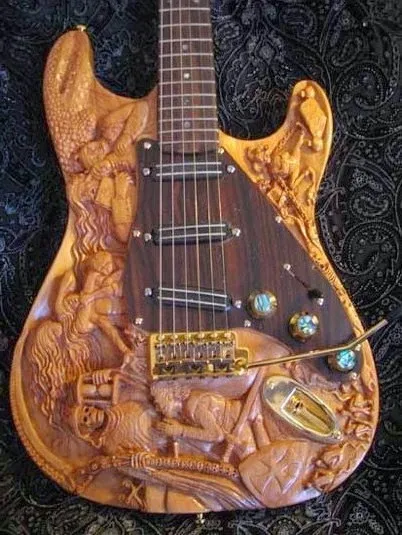Mental illness: Bipolar Disorder

Bipolar disorder also known as manic depression, is a mental illness that brings severe high and low moods and changes in sleep, energy, thinking, and behavior.
People who have bipolar disorder can have periods in which they feel overly happy and energized and other periods of feeling very sad, hopeless, and sluggish. In between those periods, they usually feel normal. You can think of the highs and the lows as two "poles" of mood, which is why it's called "bipolar" disorder.
The word "manic" describes the times when someone with bipolar disorder feels overly excited and confident. These feelings can also involve irritability and impulsive or reckless decision-making. About half of people during mania can also have delusions (believing things that aren't true and that they can't be talked out of) or hallucinations (seeing or hearing things that aren't there).
"Hypomania" describes milder symptoms of mania, in which someone does not have delusions or hallucinations, and their high symptoms do not interfere with their everyday life.
The word "depressive" describes the times when the person feels very sad or depressed. Those symptoms are the same as those described in major depressive disorder or "clinical depression," a condition in which someone never has manic or hypomanic episodes.
Most people with bipolar disorder spend more time with depressive symptoms than manic or hypomanic symptoms.
What Are the Symptoms of Bipolar Disorder?
In bipolar disorder, the dramatic episodes of high and low moods do not follow a set pattern. Someone may feel the same mood state (depressed or manic) several times before switching to the opposite mood. These episodes can happen over a period of weeks, months, and sometimes even years.
How severe it gets differs from person to person and can also change over time, becoming more or less severe.
Symptoms of mania ("the highs"):
- Excessive happiness, hopefulness, and excitement
- Sudden changes from being joyful to being irritable, angry, and hostile
- Restlessness
- Rapid speech and poor concentration
- Increased energy and less need for sleep
- Unusually high sex drive
- Making grand and unrealistic plans
- Showing poor judgment
- Drug and alcohol abuse
- Becoming more impulsive
During depressive periods ("the lows"), a person with bipolar disorder may have:
- Sadness
- Loss of energy
- Feelings of hopelessness or worthlessness
- Not enjoying things they once liked
- Trouble concentrating
- Uncontrollable crying
- Trouble making decisions
- Irritability
- Needing more sleep
- Insomnia
- Appetite changes that make them lose or gain weight
- Thoughts of death or suicide
- Attempting suicide
Who Gets Bipolar Disorder?
When someone develops bipolar disorder, it usually starts when they're in late adolescence or young adulthood. Rarely, it can happen earlier in childhood. Bipolar disorder can run in families.
Men and women are equally likely to get it. Women are somewhat more likely than men to go through "rapid cycling," which is having four or more distinct mood episodes within a year. Women also tend to spend more time depressed than men with bipolar disorder.
Many people with the condition abuse alcohol or other drugs when manic or depressed. People withseasonal depression and certain anxiety disorders, like post-traumatic stress disorder (PTSD), are also more likely to have bipolar disorder.
What Causes Bipolar Disorder?
There is no single cause. Genes, brain changes, and stress can all play a role.
Researchers are studying how these factors affect bipolar disorder.
How Is Bipolar Disorder Diagnosed?
If you or someone you know has symptoms of bipolar disorder, talk to your family doctor or a psychiatrist. They will ask questions about mental illnesses that you, or the person you're concerned about, have had, and any mental illnesses that run in the family. You'll also get a checkup.
Diagnosing bipolar disorder is all about the person's symptoms and determining whether they may be the result of another cause (such as low thyroid, or mood symptoms caused by drug or alcohol abuse). How severe are they? How long have they lasted? How often do they happen?
The most telling symptoms are those that involve highs or lows in mood, along with changes in sleep, energy, thinking, and behavior.
Talking to close friends and family of the person can often help the doctor distinguish bipolar disorder from major depressive (unipolar) disorder or other psychiatric disorders that can involve changes in mood, thinking, and behavior.
What Are the Treatments for Bipolar Disorder?
Bipolar disorder can be treated. It's a long-term condition that needs ongoing care.
Medication is the main treatment, usually involving "mood stabilizers" such as carbamazepine (Tegretol), lamotrigine (Lamictal), lithium, or valproate (Depakote). Sometimes antipsychotic drugs are also used such as olanzapine (Zyprexa), quetiapine (Seroquel), lurasidone (Latuda) and cariprazine (Vraylar)), as well as antidepressants. Combinations of medicines are often used. Psychotherapy, or "talk therapy," is often recommended, too.
People who have four or more mood episodes in a year, or who also have drug or alcohol problems, can have forms of the illness that are much harder to treat.
What Can I Expect After Bipolar Disorder Treatment?
For most people, a good treatment program can stabilize moods and provide symptom relief.
Ongoing treatment is more effective than dealing with problems as they come up. People who also have a substance abuse problem may need more specialized treatment.
Bipolar Disorder and Suicide
Some people who have bipolar disorder may become suicidal.
Learn the warning signs and seek immediate medical help for them:
- Depression (changes in eating, sleeping, activities)
- Isolating yourself
- Talking about suicide, hopelessness, or helplessness
- Acting recklessly
- Taking more risks
- Having more accidents
- Abusing alcohol or other drugs
- Focusing on morbid and negative themes
- Talking about death and dying
- Crying more, or becoming less emotionally expressive
- Giving away possessions
There are several types of bipolar disorder; all involve episodes of depression and mania to a degree.
Bipolar disorder is a lifelong illness. Episodes of mania and depression eventually can occur again if you don't get treatment. Many people sometimes continue to have symptoms, even after getting treatment for their bipolar disorder. Here are the types of bipolar disorder:
- Bipolar I disorder involves periods of severe mood episodes from mania to depression.
- Bipolar II disorder is a milder form of mood elevation, involving milder episodes of hypomania that alternate with periods of severe depression.
- Cyclothymic disorder describes periods of hypomania with brief periods of depression that are not as extensive or long-lasting as seen in full depressive episodes.
- "Mixed features"refers to the occurrence of simultaneous symptoms of opposite mood polarities during manic, hypomanic or depressive episodes. It's marked by high energy, sleeplessness, and racing thoughts. At the same time, the person may feel hopeless, despairing, irritable, and suicidal.
- Rapid-cycling is a term that describes havingfour or more mood episodes within a 12-month period. Episodes must last for some minimum number of days in order to be considered distinct episodes. Some people also experience changes in polarity from high to low or vice-versa within a single week, or even within a single day -- the full symptom profile that defines distinct, separate episodes may not be present (for example, the person may not have a decreased need for sleep), making such "ultra-rapid" cycling a more controversial phenomenon. Rapid cycling can occur at any time in the course of illness, although some researchers believe that it may be more common at later points in the lifetime duration of illness. Women appear more likely than men to have rapid cycling. A rapid-cycling pattern increases risk for severe depression and suicide attempts. Antidepressants may sometimes be associated with triggering or prolonging periods of rapid cycling. However, that theory is controversial and is still being studied.
Well being a bipolar isnt that bad. as long we keep trying to control our self, and people around us support us, care. so its gonna be okay. Me, i also have this symptom, but it will not stop you to run your day. You have to respect your self, and try not to think about your illness. it works for me, even sometime im out of control. But its okay, now im trying to think and do somethin usefull, so i have no time to think about my illness and have no time to complaining about everything. Thanks god, i still can breathing till now and still can enjoy all the delicious foods, and the sun. Dont worry, be happy! Lots of Love










































